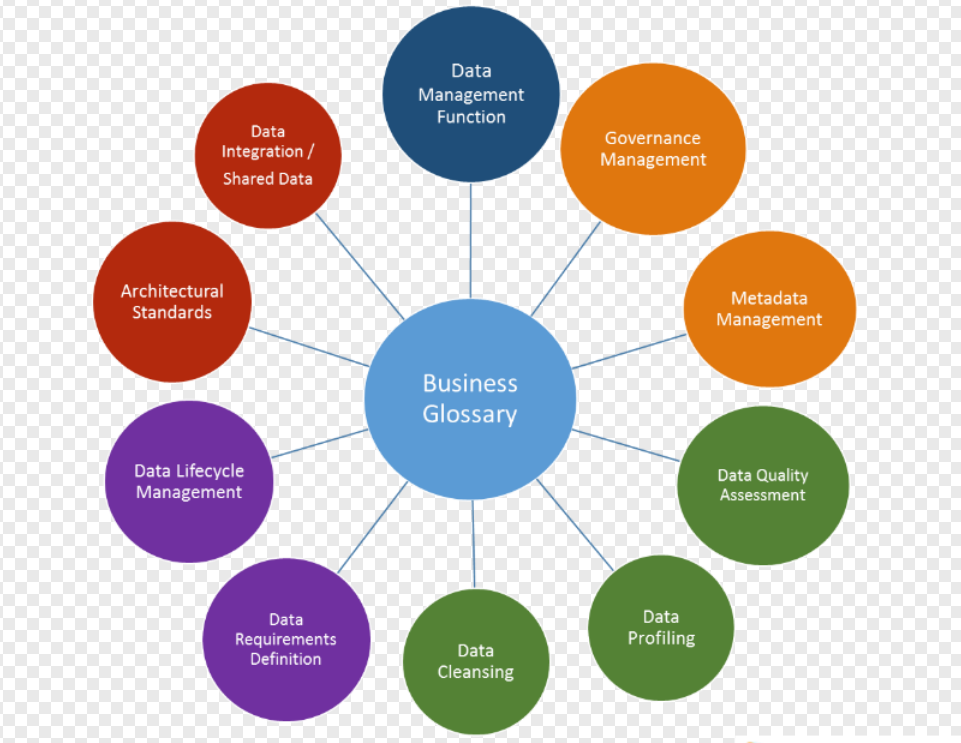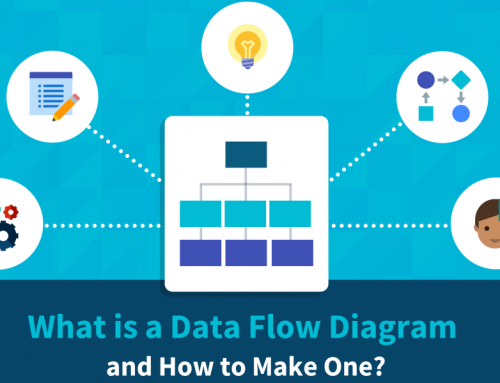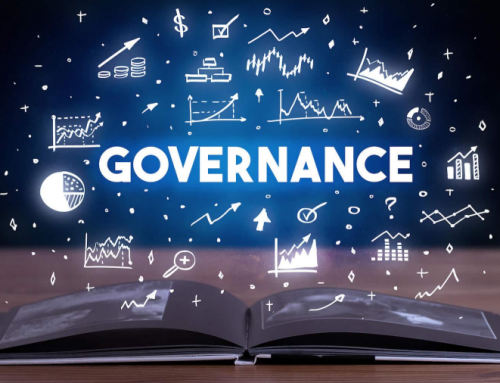Data Glossary 101
A data glossary, sometimes called business glossary, is critical to any data governance strategy, but it is often overlooked. For example, sometimes businessmen speak a different language, or in merger and acquisition cases, different companies call the same thing something else. The data glossary can address this complexity by creating a common data glossary. In a word, no matter what industry you are in or the type of data activity you are engaged in, the ability for an organization to have a unified common language is a key component of data govrnance, ensuring you can trust your data.
So, in this article, we’ll take a closer look at what a data glossary is, why it’s critical to data governance, and the difference between a data glossary and a data dictionary.
What is a data glossary?
A data glossary or business glossary is a list of business terms and their definitions that organizations use to ensure that the same definitions are used company-wide when analyzing data. The business glossary generates common business vocabulary for everyone in the organization to use. A unified common language is a key component of data governance. A consistent understanding of key business concepts, terms, and the relationships between them ensures that an organization can understand its data and manage it appropriately.

What Is A Data Glossary?
What are the differences between a data glossary and a data dictionary?
The term data glossary or business glossary is often confused with data dictionary, but they are used quite differently. The data glossary is aimed at the corporate audience. It defines the actual meaning of business terms to ensure the correct terminology is used in the appropriate context throughout the organization. Meanwhile, data dictionaries are most useful for technical staff to manage data. It defines and describes the properties of a dataset and its fields.
A data dictionary focuses on physical data assets, while a business glossary focuses on business terms and concepts. A data dictionary generally consists of a data set (usually in the form of a table) and a list of its fields (usually representing columns), while a business glossary contains a list of business terms and their definitions. The goal of a data dictionary is a clear understanding of data assets and databases, while a business glossary provides a common vocabulary and understanding of basic business concepts.
Because data dictionaries are more technical in nature, they are often built and owned by IT, while business often owns business glossaries. An organization has one data dictionary per data source, and only one business glossary can be used across the organization. Data dictionaries are typically used for documenting data sources, modeling data, and designing databases, while business glossaries are used for data governance and requirements analysis.
However, the two work together to describe different aspects of the data so that companies can get a complete picture of their data.
Why data glossary is critical to data governance?
Six reasons data glossaries are critical to data governance:
1. Bridging the gap between business and IT:
A good data governance program will create a bridge between business and IT. By understanding the underlying metadata and associated data lineages associated with business terms, business glossaries help bridge this gap and provide greater value to the organization.
2. Integrated search:
The biggest appeal of data glossary management is that it helps build relationships between business terms that drive data governance across the organization. A good data glossary should provide an integrated search feature that can find context-specific results such as business terms, definitions, technical metadata, KPIs, and process domains.
3. The ability to capture business terms and all related artifacts:
What good is a business term if it cannot be related to other business terms and KPIs? In today’s regulatory and compliance conscious environment, it is important to capture the relationship between business terms and between technology and business entities. Business glossaries define relationships between business terms and their underlying metadata for faster analysis and enhanced decision making.
4. Integrated project management and workflow:
As business and cross-functional teams operate in silos, users begin to define business terms according to their preferences, rather than following standard policies and best practices. To be effective, business glossaries should support collaborative workflow management and approval processes so that stakeholders can see established data governance roles and responsibilities. With this capability, business term users can provide input throughout the data definition process prior to publication.
5. The ability to publish business terms:
Successful businesses not only capture business terms and their definitions, but also publish them so that larger businesses can access them. Data glossary users are typically members of the data governance team and should be assigned roles to create, edit, approve, and publish data glossary content. Workflow properties will show which roles are assigned to which users, including users with publish permissions. After the initial release, data glossary content can be continuously revised and republished according to the needs of the enterprise.
6. End-to-end traceability:
Capturing business terms and building relationships is key to glossary management. However, it is far from a complete solution without traceability. A good data glossary can help generate enterprise-level traceability in the form of mind maps or tabular reports after relationships are established.
What are the benefits of a data glossary?
In today’s complex environment, having a frequently updated business glossary is essential. It ensures consistent communication between everyone in the organization. It also ensures that everyone sees and uses the data in the same way. It creates the necessary standards for the entire organization. And, as it becomes increasingly difficult for organizations to understand and properly govern data, a well-managed business glossary is one of the best ways to make sure that everyone is using the same information.
Having a frequently updated business glossary is a necessity in today’s complex environment. It ensures consistent communication between everyone in an organization. It also makes sure that everyone is viewing and using the data in the same way. It creates a necessary standard across an organization. And, since it’s becoming increasingly harder for organizations to make sense out of data and govern it properly, a well-managed business glossary is one of the best ways to ensure that everyone is working with the same information. Other benefits include:
Other benefits of data glossary include:
1. Build relationships between terms for faster data searches:
One of the biggest benefits of a business glossary is that it defines relationships between business terms, making it easier for users to search for terms. A comprehensive business glossary will define terms, provide examples, and demonstrate relationships between terms. It will correlate all other artifacts related to the term, including key performance indicators, processes, databases and systems, data owners and data stewards. Business terms are only useful if you can relate them to these other data sources. The business glossary will also link business terms between technical entities and business entities.
2. Support collaboration:
Because the data glossary provides everyone with the same definitions of terms that are used throughout the organization, departments can communicate more effectively. If you ask two different people in an organization what biweekly means, chances are that you’ll get two different answers.
However, with the business dictionary, employees no longer have to guess or re-explain what they mean, and can refer to a central location, which saves everyone time. The data glossary helps bridge the gap between departments, especially between business and IT, and especially when the data dictionary is associated, the data glossary will also include the basic metadata associated with the business terms and the associated data context, making it easier for the technical audience to match the associated metadata.
3. Define data governance roles:
Business glossaries enable collaborative workflow management and approval processes, providing visibility for stakeholders with established data governance roles and responsibilities. The business glossary prevents business and cross-functional teams from becoming separate, where they often define business terms based on their own knowledge and often do not follow standard policies and best practices. It also makes these terms accessible to the entire enterprise.
To properly build and maintain business glossaries, business users are assigned roles to perform various build-related tasks: create, edit, approve, and publish business glossary content, which ensures end-to-end traceability and accountability for projects in the business glossary and for the people involved in the process. Similarly, it is important to periodically revise and republish the data glossary according to the needs of the organization to ensure that the glossary remains current and relevant to the business. The data glossary, when updated following clear processes and strict standards, will improve data trust across the company.
4. Establish measurable data quality:
The business glossary provides consistent exchange, understanding, and processing across the organization. It is recommended that organizations develop a standard for how terms are defined, entered, modified, and published. Organizations should use documentation to standardize how quality definitions are created across the company. Some examples of standard documents may include rules such as definitions cannot use any words in the title of the defined term, cannot include acronyms or abbreviations, must be descriptive, etc. All of this brings clarity and consistency to the data.
Proper governance of business glossaries enables high-quality measurement of data. Once data quality is established and adhered to, you can begin to test data quality by how often people have to visit the business dictionary (the less visits, the better the definitions), the reduction in synonym usage, and the reduction in misunderstandings. When problems arise, it’s easy to find the problem and remedy it.
A data glossary prevents miscommunication and aligns departments in an organization. The data glossary provides transparency and ensures that data and business terms are accurate and understandable across the company. It is also a useful tool for training new employees. Best practices on how to define and categorize terms enhance user trust and findability of data and provide users with clarity.
Conclusion
Thank you for reading our article and we hope it can enble you to have a better understanding of what is a data glossary. If you want to learn more about data glossary, we would like to advise you to visit Gudu SQLFlow for more information.
As one of the best data lineage tools available on the market today, Gudu SQLFlow can not only analyze SQL script files, obtain data lineage, and perform visual display, but also allow users to provide data lineage in CSV format and perform visual display. (Published by Ryan on Jun 2, 2022)
One Comment
Leave A Comment
If you enjoy reading this, then, please explore our other articles below:




[…] diagram describes the actual file names and reports so that programmers can associate them with the Data Dictionary during the development phase of the […]